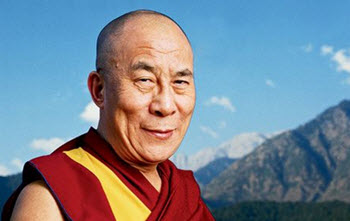The first Dalai Lama was born Pema Dorje’ in 1391 in a village called Shabtod, Tsang. His family had a humble home and they were farmers. They reared goats and sheep and were nomads. His father died when he was quite young, so his mother sent him to stay with his uncle who was a Monk at the Narthang Monastery. The monastery had the largest printing press in Tibet and so young Pema learned a lot. Within 12 years, he mastered the 12 levels of monkhood, took his vows, and became a monk. Because he was

such an astute learner, he rose within the ranks of Buddhism. He started many monasteries across Tibet as well as the surrounding territories and was revered by all. He was said to be the greatest saint of the Narthang Monastery. He died in 1474 at the age of 84 after going on a foot pilgrimage back to Narthang from Tashilhunpo. He was afforded the status of Buddahood. Within this time, the second Dalai Lama was incarnated according to Buddhist belief and the many indications of proof were observed. He was about eight years old and his installation as the second Dalai Lama was at age 11. Since then, there have been 13 Dalai Lamas’ through the centuries; the 14th Dalai Lama lives in exile in India.
Present Dalai Lama
He was also born of a humble farming family in Amdo in Tibet. He was named Lhamo Dhondrub on July 6, 1935. He began his education as a Monk at the age of 6. He was taught the curriculum of five major and five minor subjects.
The Major Subjects of the 14th Dalai Lama:
- Buddhist Philosophy
- Logic
- Medicine
- Sanskrit
- Tibetan Art and Culture
Within these five major subjects, there were sub-subjects:
- Prajnaparamita- perfect wisdom
- Madhyamika- the “Middle Way” Philosophy
- Vinaya- the dictates of monastery discipline
- Abhidharma- metaphysics
- Pramana- epistemology
He further studied these minor subjects:
- Poetry
- Astrology
- Drama and Music
- Phrasing and Synonyms
- Composition
At the completion of his extensive studies, His Holiness (which he is rightly called) sat his final exams in 1959 which he passed with high honours. He was awarded the Doctorate of Buddhist Philosophy or the Geshe Lharampa Degree.
Duties of the Dalai Lama
His Holiness the Dalai Lama is the head of the Tibetan government. He must rule as any other leader of a country; but after China’s invasion in 1950, he was forced to go into exile in 1959. Exile for him is living in India in Dharamsala, and conducting his ministerial affairs from there. His ministerial affairs include the teaching of the Buddhist practices.
The priority is to ensure the understanding of human basic values and the need for self-discipline; hence his deep belief that the struggle for Tibet’s Independence must be had by peaceful means. Forgiveness, compassion, contentment, tolerance, happiness, and no human suffering are the basic needs of humanity in which he deeply believes and teaches. The Dalai Lama firmly believes the Buddhist beliefs are the foundation of all who seek a fulfilled life.
Secondly, His Holiness seeks to promote religious harmony among the many religions of the world. He believes that, despite the differences in interpretations and practices, there is a common factor among the many religions, and that is for the believers to evolve into good human beings.
The Dalai Lama as a Buddhist Monk lives the dictates of his religion and strives to impart all his practices to humanity. It is important to note, although he is a Tibetan, he recognizes that he is firstly a human being who wants all people to live as one.
